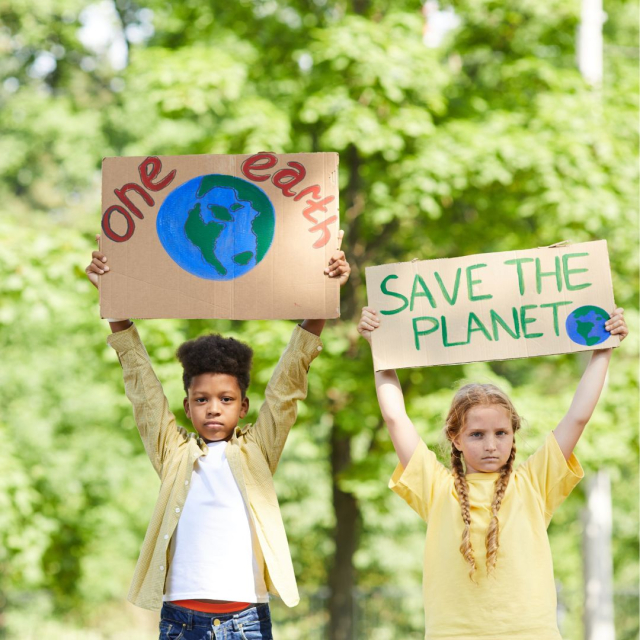Peru, a country of unparalleled biodiversity and cultural wealth, has begun to integrate ecology into its traditional festivities. Throughout the year, numerous celebrations focus on the preservation of nature, the promotion of sustainable practices and the revaluation of ancestral knowledge about caring for the environment.
1. The Pachamama Festival (August)
Pachamama, or Mother Earth, is a central deity in the Andean worldview. The celebration in his honor takes place on August 1, marking the beginning of the month dedicated to the land. In communities in the Andes, offerings called "payments to the land" are made, where food, coca leaves, chicha and other elements are buried as a sign of gratitude and respect.
Ecological importance:
Reconnection with nature: The festival promotes awareness about the symbiotic relationship between humans and the earth.
Sustainable practices: Offerings include local and natural products, encouraging the use of available resources without generating waste.
2. Inti Raymi (June)
The Inti Raymi, or Festival of the Sun, is an Inca ceremony celebrated on the winter solstice on June 24. This festival takes place mainly in Cusco and is one of the most important in the Andean tradition. The Sun god (Inti) is honored, giving thanks for the crops and requesting his favor for the next agricultural cycle.
Ecological importance:
Agricultural calendar: The celebration of Inti Raymi marks the beginning of the planting season, integrating traditional agricultural practices that respect the environment.
Cultural conservation: By keeping this tradition alive, ancestral knowledge about sustainable agriculture is preserved.
3. Harvest Festival (March)
The Harvest Festival is celebrated in the Ica region during the month of March. This festival marks the end of the grape harvest and focuses on the production of wine and pisco, emblematic products of Peru.
Ecological importance:
Sustainable agriculture: The use of agricultural techniques that respect the natural cycle of grapes and minimize the environmental impact is promoted.
Eco-tourism: The festival attracts tourists interested in sustainable experiences, fostering greater awareness about the importance of responsible agricultural production.
4. Green Holy Week (April)
In several communities in Peru, especially in the Amazon, Holy Week is celebrated with an ecological focus. During this period, reforestation, river cleaning and environmental education activities are carried out.
Ecological importance:
Environmental Conservation: Reforestation and cleanup activities help preserve local ecosystems.
Education and awareness: Educational initiatives promote the importance of caring for the natural environment among young people and the community in general.
5. Earth Day (April 22)
Earth Day is a global celebration that also has relevance in Peru. Various organizations and communities carry out activities to promote the protection of the planet, such as tree plantations, recycling campaigns and ecological fairs.
Ecological importance:
Collective action: The celebration mobilizes society to participate in concrete actions that benefit the environment.
Promotion of green policies: Local and national governments are encouraged to implement policies that promote sustainability.
6. Feast of San Juan (June 24)
The Festival of San Juan is a celebration that takes place in the Peruvian jungle. This festival is associated with the abundance of water and the fertility of the land, essential elements for Amazonian communities.
Ecological importance:
Valuation of water: The importance of water as a vital resource is promoted and activities are carried out for its conservation.
Traditional agricultural practices: The festival highlights the use of agricultural techniques that respect the ecological balance of the region.
7. National Ceviche Day (June 28)
National Ceviche Day is a culinary celebration that also has an ecological focus, especially when it comes to sustainable fishing. This day highlights the importance of ceviche in Peruvian gastronomy and promotes the responsible consumption of marine products.
Ecological importance:
Sustainable fishing: Responsible fishing and the protection of endangered marine species are encouraged.
Consumer education: Raises awareness about the importance of choosing sustainable marine products to preserve aquatic ecosystems.
8. International Potato Festival (May)
The International Potato Festival is celebrated in various regions of Peru during the month of May. This event highlights the importance of the potato, a crop native to the Andes, and its role in food security and agricultural biodiversity.
Ecological importance:
Conservation of native varieties: The cultivation and consumption of traditional potato varieties is promoted, preserving genetic diversity.
Sustainable agriculture: The use of agricultural practices that respect the environment and optimize the use of natural resources is encouraged.
9. Farmer's Day (June 24)
Farmer's Day is a celebration that honors the work of Peruvian farmers and their contribution to the country's economy and culture. On this day, agricultural fairs, exhibitions and recognition activities are held.
Ecological importance:
Valuation of agricultural work: The importance of the work of farmers in the sustainable production of food is recognized.
Promotion of ecological practices: Environmentally friendly agricultural techniques are promoted, highlighting agroecology and permaculture.
10. World Environment Day (June 5)
World Environment Day is a global celebration that is commemorated with various activities throughout Peru. Government organizations, NGOs and communities come together to promote the protection of the natural environment through campaigns, workshops and community actions.
Ecological importance:
Environmental awareness: Education and awareness about environmental problems and the need to take measures to mitigate them are promoted.
Local action: Communities are encouraged to implement local conservation and sustainability projects.
The ecological festivities in the Peruvian calendar are an example of how culture and tradition can be harmoniously integrated with environmental conservation. Through these celebrations, sustainable practices are promoted, ancestral knowledge is revalued and greater awareness is encouraged about the importance of protecting our planet. Peru, with its rich biological and cultural diversity, offers an inspiring example of how festivities can be a powerful tool for environmental education and community action towards a more sustainable future.
